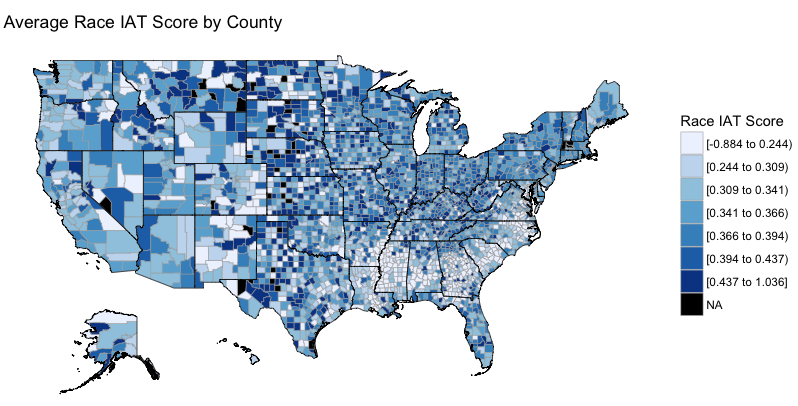Why Everyone Should Take The Race IAT at Least Once in Their Life
What is the Race IAT and how does it relate to current events?
This summer citizens across the world witnessed and participated in a powerful demonstration of civil rights in America. The Black Lives Matter Movement inspired many people of this country and called for immediate reform of several institutions to make the country truly equal for all. While the movement publicly called out many legal and political institutions in hopes for change, it is important to realize that reforming public institutions can only take the movement so far. Much of the racism experienced by people of color that this movement was attempting to resolve is experienced in private, which calls for a reevaluation and reform of personal beliefs.
When asked about their stance on the Black Lives Matter Movement many individuals can consciously and confidently express whether they do or don’t support it. However, conscious support and support through actions are two different things. It is not uncommon for those who support the movement to demonstrate subconscious actions that go against their conscious beliefs, especially those in positions of privilege. This doesn’t mean that these people are secretly racist, instead, it demonstrates that they may have an unconscious bias that they are not aware of. Although it isn’t a definitive solution, becoming aware of unconscious racial biases can help people be more socially conscious about how their actions might read to others. So, how do you discover unconscious racial biases?
In 1995, Tony Greenwald founded the Implicit Association Test (IAT). By using concepts founded in social psychology, the IAT is used to assess implicit attitudes, stereotypes, and self-concepts. The IAT’s purpose is to detect the strength of someone’s subconscious association between mental representations and objects in memory, which has the potential to cause disarray when people begin to realize that conscious beliefs and subconscious associations don’t always align with each other. By 1998, the IAT was applied to racial attitudes.

Although it may seem like a complex process, measuring implicit bias is a fairly simple procedure when looking at the race IAT. The race IAT provides four categories: positive words, negative words, pictures of white children, and pictures of African American children. From there, the IAT groups the categories; for example, pictures of African American children and positive words on one side and pictures of white children and negative words on the other. Then, the participant is asked to press a right or left key and place the words into the correct groups. Throughout this procedure, the IAT records how long it takes each participant to correctly group each term or picture and uses this information to determine the participant’s implicit bias. Over the years there have been several criticisms of the IAT and its reliability, however, “[the race IAT] is very widely used so they have a lot of data to draw from. Like with any assessment there are positives and negatives,” explains Mrs. McCord, a psychology teacher at Oakton. Regardless of the data collected from IATs, it is highly encouraged to refer to the race IAT as a starting point of self-awareness instead of a solution.
“In my classes, I use it more as a tool to start conversations and also to encourage self-reflection,”
Mrs. McCord replies.
Many younger generations were criticized during the height of the Black Lives Matter movement for not having a set course of action or acting in ways that wouldn’t cause long-term change, such as posting on social media. Although posting on social media won’t get a lawmaker to pass legislation relating to the BLM cause, the goal of raising awareness was more about educating the masses about the reality of the situation and hopefully gaining support. Along with educating those around you, it is important to remain educated yourself, not only about the world around you but also how you are reacting and interpreting the world as you see it. By taking the race IAT one can gain self-awareness about the unconscious and otherwise unreachable part of their brain responsible for reacting to and interpreting your environment. The race IAT can serve as a baseline for personal unconscious racial attitudes and a starting point for self-reflection and improvement. Self and social awareness is a powerful skill that can cause real change in the future if younger generations dedicate themselves to strengthening the skill now.
Hello, my name is Claudia and I am a student at Oakton High School. I am the manager of the Oakton varsity volleyball team and Editor in Chief of the Oakton...




